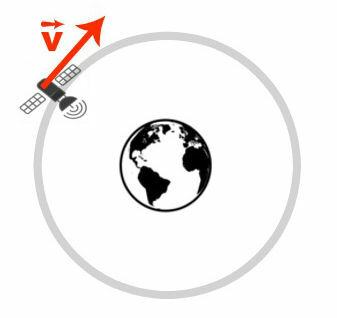THE Moon is Earth's natural satellite, has an equatorial diameter of approximately 3500 km, mass of 7.5 x 1022 Kg and a translation speed of 3700 km/h. Have you ever wondered why the Moon doesn't fall to Earth, being such a big and massive body?
THE Law of Universal Gravitation was one of the important contributions of Isaac Newton. It shows us that massive bodies have the ability to attract each other by a mutual force called the gravitational force. Therefore, we can conclude that the Earth attracts the Moon and the Moon attracts the Earth with a certain force, but the natural satellite never lands on the Earth's surface.
Newton's idea
Newton devised a way to place objects in orbit around the Earth. An object, when launched horizontally from a certain height, performs a curved movement until it falls to the ground. This movement is a curve because it follows the curvature of the Earth. By launching the object from a certain height and at the correct speed, it is possible to make it follow the entire curvature of the Earth and return to the point of origin of the launch. In this situation, the object maintains a velocity tangential to the trajectory and performs an “infinite fall” movement around the planet.
Why doesn't the Moon fall to Earth?
The Moon's speed is tangential to its trajectory around the Earth, and as such, it is in a kind of perpetual falling motion and will never reach the Earth's surface. Its velocity value is large enough for it to remain in orbit following the Earth's curvature.
launching a satellite
The release of satellites artificial ones follows this same principle. The satellite is “pushed” by a rocket into a region outside the Earth's atmosphere at the exact speed that will allow it to perform perpetual motion around the planet.

Satellite speed is tangential to its trajectory
The equation below determines how fast a satellite must be to stay in a given orbit around the Earth.
In this equation, we have:

V: Satellite speed;
G: Universal gravitation constant (6.7 x 10 – 11 Nm2/Kg2);
M: Earth Mass (approximately 6.0 x 10 24 kg);
A: Distance from the satellite to the center of the Earth.
By Joab Silas
Graduated in Physics
Source: Brazil School - https://brasilescola.uol.com.br/fisica/por-que-lua-nao-cai-na-terra.htm
